Associations between aspirin use and the risk of cancers: a meta-analysis of observational studies
- PMID: 29534696
- PMCID: PMC5851082
- DOI: 10.1186/s12885-018-4156-5
Associations between aspirin use and the risk of cancers: a meta-analysis of observational studies
Abstract
Background: Epidemiological studies have clarified the potential associations between regular aspirin use and cancers. However, it remains controversial on whether aspirin use decreases the risk of cancers risks. Therefore, we conducted an updated meta-analysis to assess the associations between aspirin use and cancers.
Methods: The PubMed, Embase, and Web of Science databases were systematically searched up to March 2017 to identify relevant studies. Relative risks (RRs) with 95% confidence intervals (CIs) were used to assess the strength of associations.
Results: A total of 218 studies with 309 reports were eligible for this meta-analysis. Aspirin use was associated with a significant decrease in the risk of overall cancer (RR = 0.89, 95% CI: 0.87-0.91), and gastric (RR = 0.75, 95% CI: 0.65-0.86), esophageal (RR = 0.75, 95% CI: 0.62-0.89), colorectal (RR = 0.79, 95% CI: 0.74-0.85), pancreatic (RR = 0.80, 95% CI: 0.68-0.93), ovarian (RR = 0.89, 95% CI: 0.83-0.95), endometrial (RR = 0.92, 95% CI: 0.85-0.99), breast (RR = 0.92, 95% CI: 0.88-0.96), and prostate (RR = 0.94, 95% CI: 0.90-0.99) cancers, as well as small intestine neuroendocrine tumors (RR = 0.17, 95% CI: 0.05-0.58).
Conclusions: These findings suggest that aspirin use is associated with a reduced risk of gastric, esophageal, colorectal, pancreatic, ovarian, endometrial, breast, and prostate cancers, and small intestine neuroendocrine tumors.
Keywords: Aspirin; Cancers; Meta-analysis; Observational studies.
Conflict of interest statement
Ethics approval and consent to participate
Not applicable
Consent for publication
Not applicable
Competing interests
The authors declare that they have no competing interests.
Publisher’s Note
Springer Nature remains neutral with regard to jurisdictional claims in published maps and institutional affiliations.
Figures



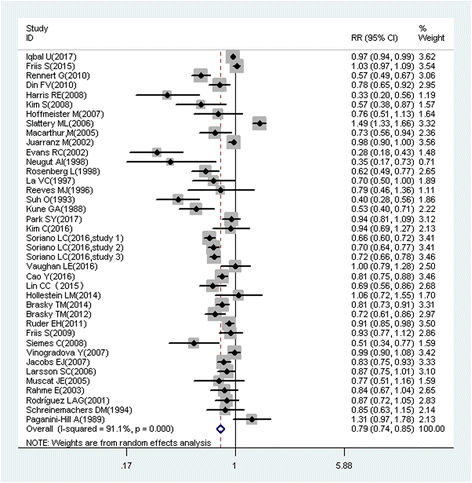
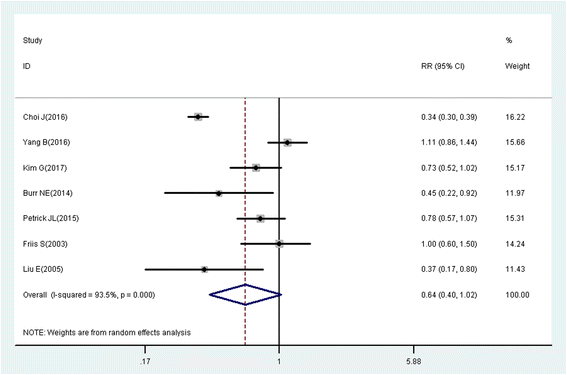
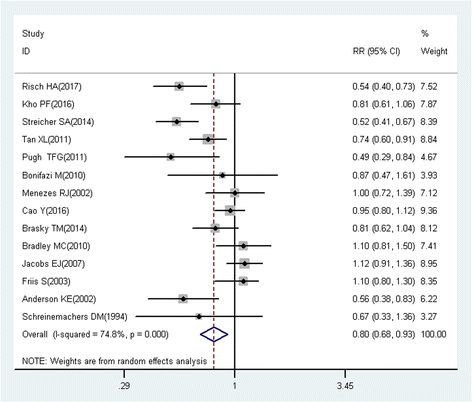



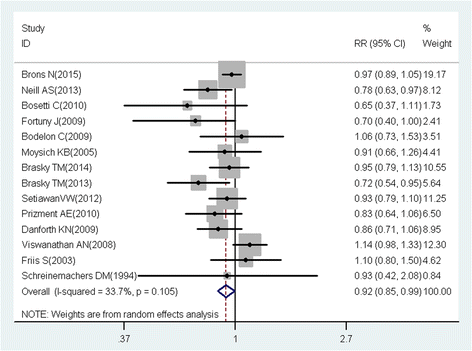
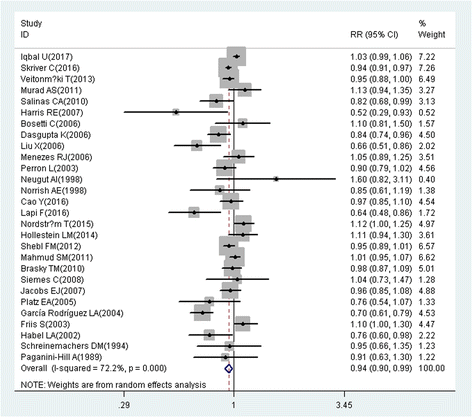
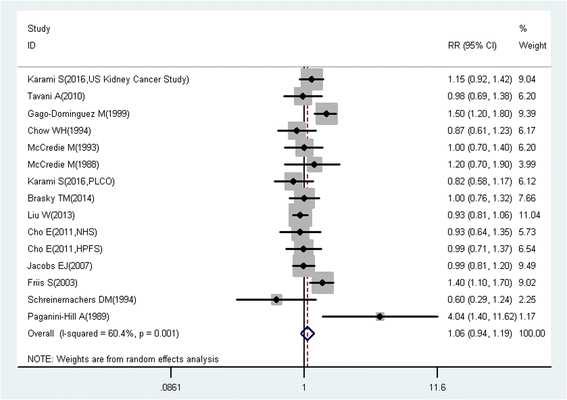


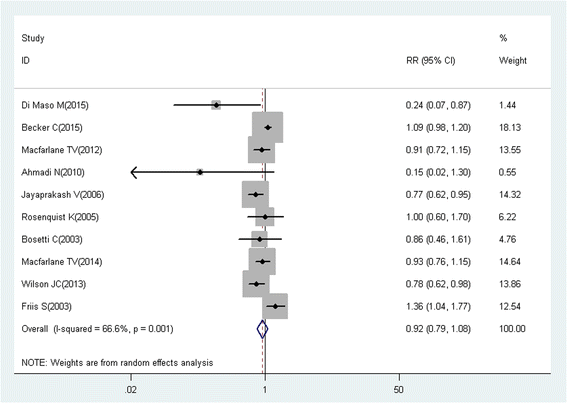

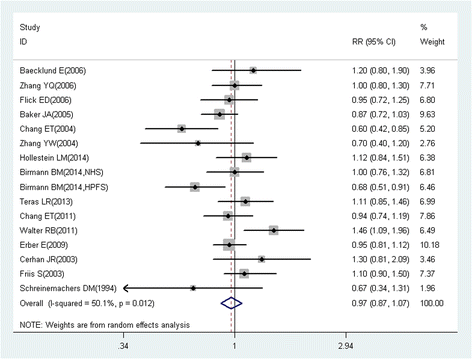


References
-
- VanWormer JJ, Greenlee RT, McBride PE, et al. Aspirin for primary prevention of CVD: are the right people using it? J Fam Pract. 2012;61:525–533. - PubMed
Publication types
MeSH terms
Substances
Grants and funding
LinkOut - more resources
Full Text Sources
Other Literature Sources

